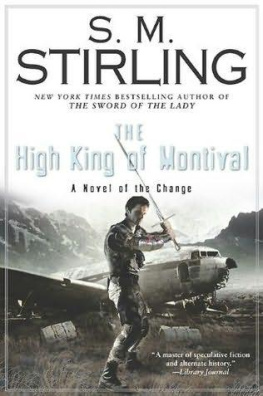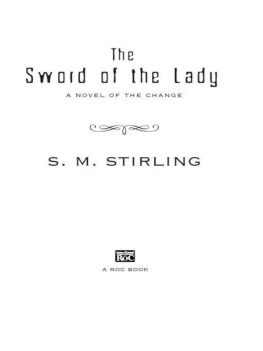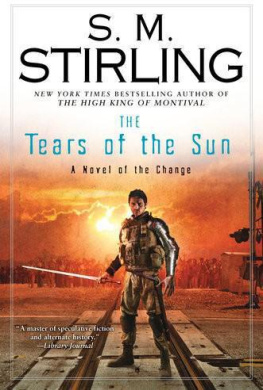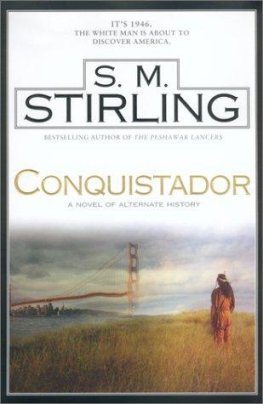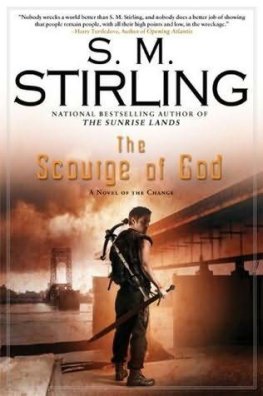Acknowledgments
To Melinda, Yvonne, Walter, George, Daniel, the two Terrys, Sandra and Trent, of Critical Mass.
To Harry Turtledove, for the gift of Hobson-Jobson, which was an immense help; and to Eric Flint, for recommending the Cultural Atlas of India.
To Mark Anthony, best chiropractor in the West.
For inspiration, Id also like to thank Kipling, Mundy, Lamb, Merritt, Howard, Sabatini, Masters, Fraser, Bur-roughs, Wren, Kline, and all the others, the grand storytellers of adventure and romance.
Quotations from The Golden Road and Hassan, by James Elroy Flecker.
Appendix One:
The Fall
On October 3, 1878, the first of a series of high-velocity heavenly bodies struck the earth. The impacts continued for the next twelve hours, moving in a band from east to west and impacting at shallow angles. The scanty and confused records meant that it was never possible to determine the exact nature of the object or objects; the consensus of Imperial scholars a century and a half later was that the Fall was either a spray of comets or a smaller number of large comets (possibly only one) that broke up in the Earths atmosphere.
The first impact was close to the southern edge of Moscow; later studies by Imperial scholars examining the crater indicated an energy release in the 300 megaton range. A band of further impacts of 100 to 300 megatons swept across Europe, the last striking 50 miles west and slightly south of Paris. Strikes were recorded as far north as the Baltic, and the southernmost fell at the head of the Adriatic; that was, however, the only impact south of the Alps.
The next impact was the largest of all, apparently in the western Atlantic, and the body involved may have been up to a kilometer in diameter. Further large fragments fell all across North America, in a rather wider band than in Europe and as far west as the Rocky Mountains.
Blast damage from strikes on land was the first and most obvious consequence; millions probably died in the immediate aftermath.
Hours to days later, tsunamis struck the coasts of countries all around the North Atlantic Basin. These were most severe along the Atlantic coast of North America, with wave fronts reaching as far inland as the Appalachians in some places. In Europe, Ireland, coastal Scandinavia, and much of the Atlantic coast of France and Spain were wrecked, with loss of life in the tens of millions; the destruction would have been even worse, had not the shallow bed of the North Sea robbed the monster waves of some of their force. The shadow of Ireland protected much of western England, and the British Isles as a whole had a similar effect on northern France, Belgium, and the Netherlands.
The impactsparticularly the water strikereleased enormous amounts of particulate matter and water into the upper atmosphere. The Gulf Stream was also disrupted for several years, and did not fully resume for a decade.
The climatic effects were drastic and immediate. With insolation reduced by 10 percent or more, winter was exceptionally severe throughout the northern hemisphere, and the southern-hemisphere summer was relatively cool and damp. In Europe, where the warming effect of the Gulf Stream was so importantEngland is as far north as Labrador, one should rememberthe cold season was more than Siberian in its harshness and lasted into April.
Recovery might have been possible, despite the enormous loss of life and destruction of infrastructure, had the next summer been even remotely normal. But it was not. The combination of reduced sunlight and loss of the Gulf Stream made the warm season colder and wetter than anything in recorded history throughout Europe, with killing frost in at least a few days of every month as far south as Naples. The following winter was almost as severe as that of 1878, as were those of 1880 and 1881. The summers showed some improvement, but not enough for any appreciable agricultural yield; and there were no sources of imported food available.
By late 1879, with starvation universal, order had broken down throughout northern and central Europe. Mass migrations southward were attempted, but the bulk of the northern Mediterranean shore was only marginally better off in terms of climate, and no better off in terms of food supply when the remnants of the starving hordes arrived. Populations crashed, with only a few small enclaves holding out on the Mediterranean shore. Elsewhere, the only survivors were the most successful cannibal bands.
Even when the climate warmed enough to make agriculture possible again, neither seed grain nor working stock nor tools were usually available; and the remaining population huddled in tiny groups, hiding from and hunting each other in a grisly game of stalking and eating. By 1890, the total population of mainland Europe west of the Urals had fallen to a few million. Here and there tiny hamlets were making attempts to restart farming, but on a level barely Neolithic except for materials salvaged from pre-Fall settlements. Throughout the continent, the forest began its reconquest of the landscape.
North America followed a basically similar trajectory, with patches of settled life surviving along the Gulf Coast. The eastern seaboard remained almost clear of human life for generations; on the interior plains there were small farming enclaves toward the east, with nomad hunters and herders (white, Amerind, and mixed) farther south and west, and a remnant of the Mormons in Utah. Most of the land swiftly reverted to wilderness, and the population was reduced below the levels of 1600.
California suffered less climatically, although the cold and increased rainfall did drastically reduce yields. Attempts to evacuate population from farther east resulted in an impossible overburdening of its resourcesa tragic consequence of the survival of the transcontinental railwaysand ultimately a number of regressed city-states emerged.
Most of the rest of the northern hemisphere suffered several years of weather wild enough to reduce crop yields by at least 50 percent, with gradual amelioration from 1881 on and more or less normal weather returning by the 1890s. Effects were strongest to the north, tapering off toward the tropics. Mathematically, it might have been possible for a third to a half of the population of, say, northern China to survive; but when it became apparent that massive famine was inevitable, secondary effectschaos, banditry, civil and regional warsset in, as struggles over the meager yields of food broke out.
These in turn drove farmers off their land, and resulted in the destruction of seed supplies, livestock, and irrigation and distribution systems. The result was catastrophic dieback in the areas south of the worst-hit zone, limited only by comparison to events in Europe; although there was no absolute break in the continuity of agriculture, population declines of up to 80 percent were common in a broad zone that included much of East Asia and the lands between Mexico and northern Brazil. The halting of world trade, and the loss of the only technologically developed part of the world, exaggerated the crash to preindustrial, and in some cases prehistoric, levels.
Meanwhile, the southern hemispheresubequatorial Africa, the southern cone of South America, Australasia, much of Indonesiawere spared the worst effects. Temperatures dropped, but generally not enough seriously to depress crop yields. Floods were a serious problem, but greater rainfall in arid areas actually increased their carrying capacity for most of the post-Fall decade.
Appendix Two:
The Exodus
The British Isles suffered as badly as most parts of Europe from the Fall, but the consequences were not so immediately drastic.


